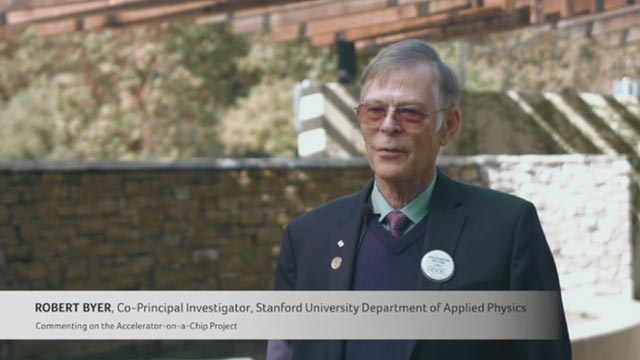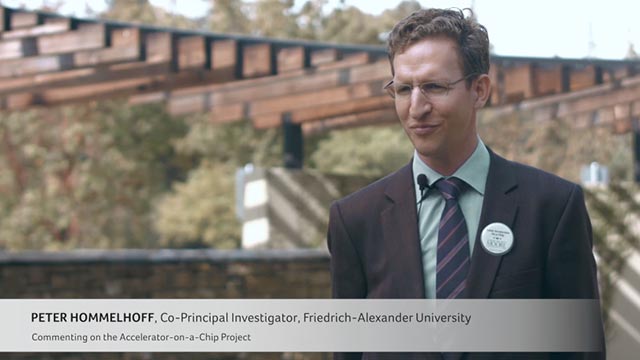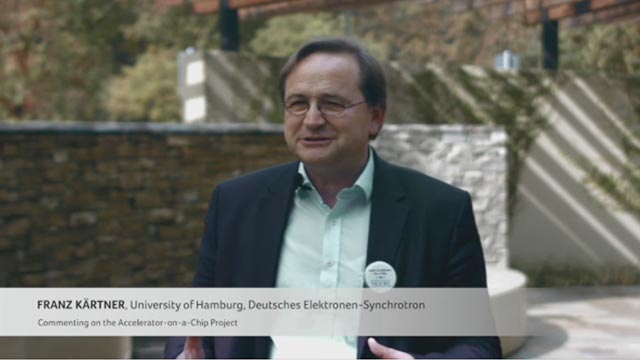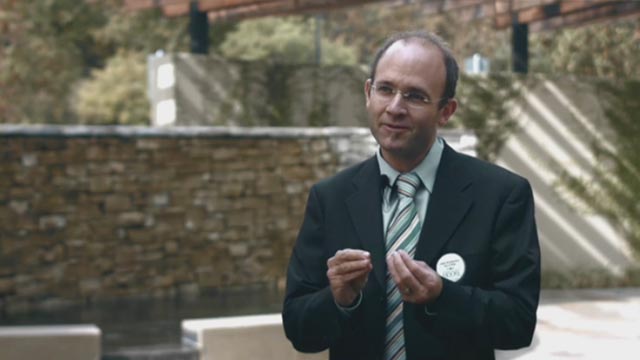PALO ALTO, Calif.--(BUSINESS WIRE)--The Gordon and Betty Moore Foundation awarded $13.5 million to Stanford University and its international partners to take an innovative particle accelerator design dubbed the “accelerator-on-a-chip” and make it into a fully functional and scalable working prototype. This laser-driven particle accelerator could have a major impact on the physics community and on science in general by providing new particle and photon sources that are less expensive to build, address current infrastructure challenges and provide broader access to the scientific community.
The international effort to demonstrate a working prototype of an accelerator is based on experiments published in 2013 by the project’s two principal investigators, Dr. Robert Byer of Stanford University in Nature and Dr. Peter Hommelhoff of Friedrich-Alexander University Erlangen-Nuremberg in Physical Review Letters.
Drs. Byer and Hommelhoff each showed the potential for shrinking a laser-driven particle accelerator with the hope of building smaller and cheaper accelerators. Dr. Byer’s team injected high-energy electrons into a tiny device with a grating-like structure made from silica glass. They fired a pulse of laser light into this artfully-designed structure that produced a gain in electron acceleration that is 10 times greater than that achieved by conventional accelerators. Dr. Hommelhoff’s team, in a parallel approach, demonstrated that a laser could also be used to accelerate lower-energy, non-relativistic electrons. Both results taken together open the door to a compact particle accelerator. See how accelerator-on-a-chip works in this brief video.
“Based on our proposed revolutionary design, this prototype could set the stage for a new generation of ‘tabletop’ accelerators, with unanticipated discoveries in biology and materials science and potential applications in security scanning, medical therapy and x-ray imaging,” said Robert L. Byer, Ph.D., department of applied physics at Stanford University and co-principal investigator on the project.
The project brings together world renowned experts in accelerator physics, laser physics, nanophotonics and nanofabrication to develop a functional, scalable prototype accelerator within five years that will lead to electron and x-ray sources that are orders of magnitude smaller than current particle accelerators. Along with the leads at Stanford University and Friedrich-Alexander University, the international collaboration includes three national laboratories: SLAC National Accelerator Laboratory in Menlo Park, CA; Deutsches Elektronen-Synchrotron (DESY) in Hamburg, Germany; and the Paul Scherrer Institute in Villigen, Switzerland. It also includes five universities and one industry partner: University of California Los Angeles, Purdue University, University of Hamburg, the Swiss Federal Institute of Technology in Lausanne (EPFL) and Technical University of Darmstadt and Tech-X Corporation.
For the past 75 years, particle accelerators have been an essential tool for physics, chemistry, biology and medicine, leading to multiple Nobel-Prize winning discoveries. Without new accelerator technology to reduce the cost (in the billions) and size (several miles in length) and provide increased access for scientists, the field of particle physics and structural biology could stall.
“The impact of shrinking accelerators can be compared to the evolution of computers that once occupied entire rooms and now can be worn around your wrist. This advance means we may be able to expand particle acceleration into areas and communities that previously had no access to such resources,” said Dr. Peter Hommelhoff, professor of physics at Friedrich-Alexander University and co-principal investigator on the project.
The opportunities for discovery have never been greater, yet commitment and funding for science—from government, from industry, and from philanthropy—fall far short of what is needed today to accelerate progress into the future. While philanthropy alone cannot entirely fill this gap, the Gordon and Betty Moore Foundation believes in the importance of investing in basic research to fuel innovation that can have a significant impact on future generations. The foundation is one of the world’s largest private funders in science, including scientific research and technology development, investing more than $1.15B over the past 15 years.
“The accelerator-on-a-chip has terrific scientists pursuing a great idea. We’ll know they’ve succeeded when they advance from the proof-of-concept to a working prototype,” said Robert Kirshner, Ph.D., chief program officer of science at the Gordon and Betty Moore Foundation. “This research is risky, but the Moore Foundation is not afraid of risk when a novel approach holds the potential for a big advance in science. Making things small to produce immense returns is what Gordon Moore did for microelectronics.”
Gordon and Betty Moore Foundation fosters path-breaking scientific discovery, environmental conservation, patient care improvements and preservation of the special character of the Bay Area. Visit www.moore.org or follow @MooreFound.







